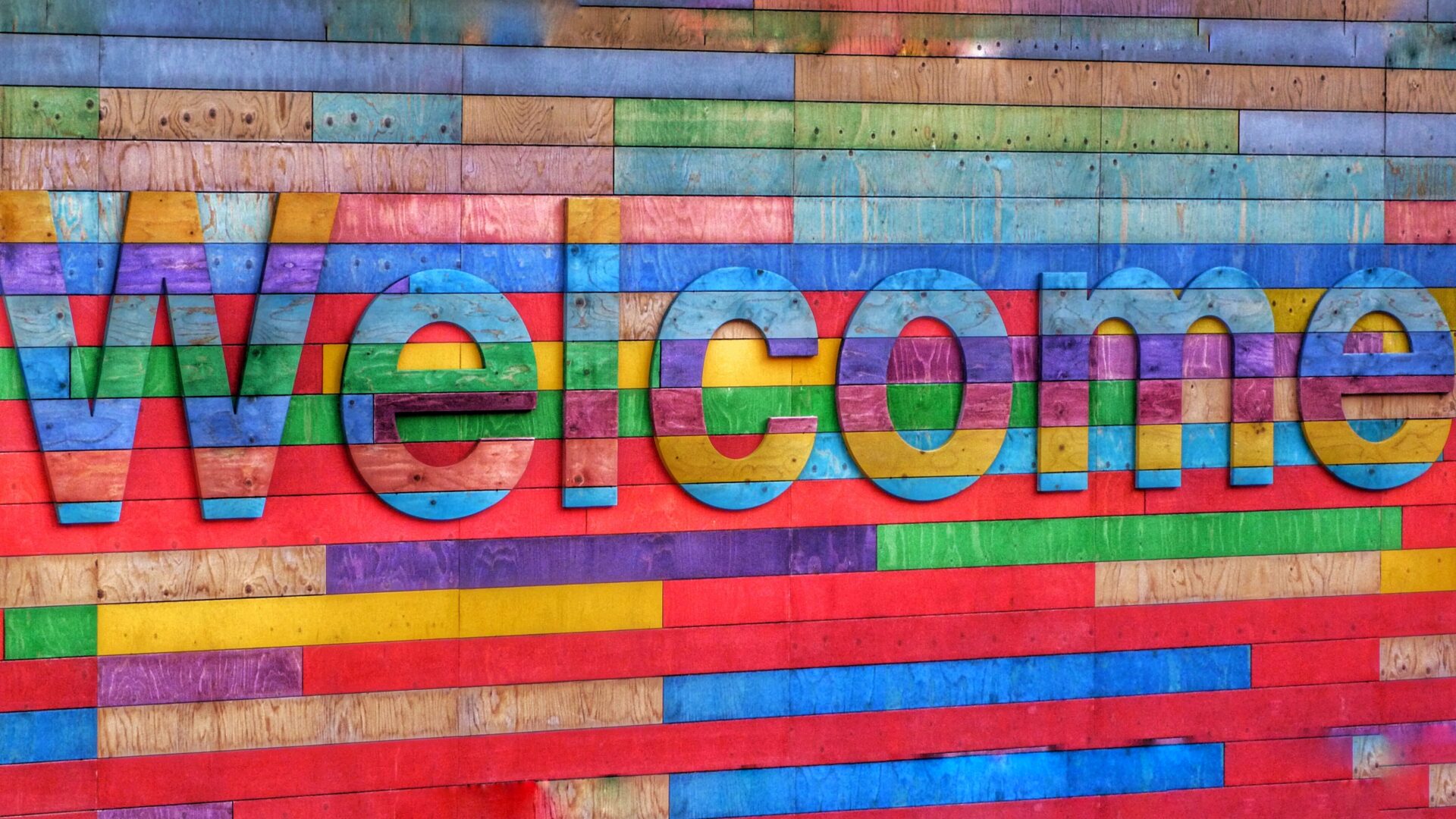The United States hopes to welcome 125,000 refugees this fiscal year, an ambitious goal that would mark a record-high number of new arrivals in more than three decades. To help do that, the federal government has launched a sweeping new program to increase the capacity of everyday Americans to participate in the resettlement process.
Welcome Corps, announced in mid-January, allows groups of five individuals to join together and sponsor refugees as they arrive in the United States. The program will be rolled out in two stages: the first – effective immediately – will pair sponsorship groups with refugees already approved for resettlement in the United States; the second – slated to begin this summer – will also allow sponsors to refer potential refugees for resettlement and sponsor their arrival should they be approved.
Here at Soft Landing Missoula, we have seen firsthand how so many families spend years waiting for the opportunity to build a new life in this country and the toll that can take on them. We believe the refugee resettlement process needs to be streamlined so we can more quickly welcome refugees, and we fully support the rebuilding of traditional resettlement pathways as well as creative solutions such as this one to achieve that goal.
Sponsors must raise an initial amount of $2,275 per refugee that is designated to support them during their first three months in this country with things like apartment deposits, furniture, transportation costs, and other needed items. They are also the first people to meet refugees when they get off the plane in their new homes, and sponsors are tasked with helping new neighbors connect with essential services such as healthcare and school; secure employment and job skills training; navigate transportation networks and local communities; and adjust to life in an entirely new place.
While sponsors will receive training from existing refugee services organizations, they should be prepared to be the primary point of contact and support system for new arrivals during their first three months in the United States. This is a serious and significant commitment. At that point, families may become eligible for other federal programs that the sponsors should also be prepared to help them access as they transition to this next phase in the resettlement process. Of course, it is also the hope that new arrivals and sponsor groups build a lasting connection of some kind that extends beyond the 90-day commitment.
Refugees arriving through Welcome Corps will have full refugee status, allowing them a permanent home in the United States with a five-year path to citizenship.
As Julieta Valls Noyes, Assistant Secretary of State for the Bureau of Population, Refugees and Migration, said during a virtual press conference, sponsors are expected to “serve as guides to the refugees in their new communities, first responders in times of need and role models.”
Groups of sponsors will be vetted by the U.S. government, required to show a plan for how to meet these requirements and subject to check-ins from government officials or existing local refugee resettlement organizations.
Why is this important?
Though there’s a long tradition of the United States welcoming vulnerable people fleeing crises all over the world, landmark legislation formalized the resettlement program and established the United States Refugee Admissions Program (USRAP) in 1980. Since then, most refugees have arrived through resettlement guided by local refugee resettlement agencies – like the International Rescue Committee here in Missoula – which receive federal funding to support their work.
Welcome Corps is not meant to replace this existing path to resettlement, but rather to complement it so that the government can welcome more people at a faster pace. Right now, people wait years to be resettled in the United States. Biden administration officials believe this program will eventually help streamline the admissions process, increase the number of people admitted each year and help resolve the backlog of tens of thousands of people waiting for resettlement.
“At some level, it’s a math problem,” said John Finer, who works in the Office of the National Security Advisor, during a press conference.
For the Biden administration to meet its refugee admissions goal of 125,000 people in a single fiscal year, 10,400 people would have to arrive every month. Admissions, Finer said, is a “lagging indicator” behind the number of admissions interviews taking place overseas, and there have already been 20,000 interviews conducted in the first quarter of the current fiscal year. That means, as a country, we should see a significant jump in the number of arrivals in the coming months.
According to the Biden White House, the Welcome Corps program aims to have 10,000 Americans sign up as sponsors in order to support the arrival of 5,000 people this year – and grow from there. This goal shows that it’s not designed as a replacement for traditional resettlement pathways, but rather as another option to expand the system’s capacity, and the ability of everyday Americans to welcome.
Versions of this initiative have proven to work well in the United States.
Private sponsorship was made available for Afghans fleeing the Taliban in 2021 and Ukrainians escaping the Russian invasion in 2022. Over 123,000 people applied to sponsor Ukrainians, and roughly 30,000 Ukrainians arrived as a result of the Uniting for Ukraine sponsorship pathway. Though the Afghan Sponsor Circle program began after tens of thousands of people had already fled Kabul, hundreds were welcomed here more quickly as a result of the sponsorship opportunity.
Both programs allowed people experiencing acute crises to seek haven more quickly. However, many arrived with different immigration statuses – such as humanitarian parole – that did not give them a path to permanent lawful status and, eventually, citizenship. Additional programs to welcome Venezuelans, Nicaraguans, Cubans, and Haitians also offer a temporary solution under humanitarian parole, but typically don’t allow individuals to access essential public benefits. This situation leads to questions about a family’s ability to stay in the United States long-term, and it can introduce more hardship for the refugees and sponsors alike.
Those who arrive through the Welcome Corps private sponsorship will not have to grapple with such uncertainty, as they will arrive with refugee status and a path to citizenship after five years. Welcome Corps does not retroactively grant individuals who arrived under other private sponsorship programs with humanitarian parole status the same option.
What does this mean for Missoula?
When the Uniting for Ukraine program went live, about 100 people across Montana applied to be sponsors. We don’t yet know how many Montanans will take advantage of this new opportunity to sponsor refugees from all over the world – but we here at Soft Landing Missoula will continue to provide long term support and opportunities for connection and community-building for refugees and immigrants through our existing programming.
Missoula’s resettlement agency, the International Rescue Committee (IRC), will also continue to receive refugee arrivals this year – up to 250 individuals, which would mark its busiest year – through the traditional resettlement pathway. But the IRC will not be primarily responsible for those refugees who arrive through Welcome Corps.
While Soft Landing will eagerly welcome new arrivals through Welcome Corps to participate in our regular programming – opportunities like our youth program, adult support for things like driver’s education and mentorship, Community Center drop-in support and special events – we do not provide access to core services such as employment, healthcare, and housing; financial assistance; or help with immigration paperwork, etc.
What if I’m interested in becoming a sponsor?
- If you are interested in becoming a sponsor, start by visiting the Welcome Corps website. Consider taking this comprehensive training course designed to guide you through everything expected of a sponsor circle. At least one person of each group will be required to take this course before applying.
- If you want to move forward, you will need to form a group of at least five adults prepared to commit a minimum of at least $2,275 per refugee.
- Work together with your group using the resources provided through Welcome Corps training and information sessions to form your Welcome Plan. This will be required as part of your application, and it includes your step-by-step plan for how to successfully welcome new arrivals, connect them with essential needs like housing, healthcare and employment and help them integrate fully into the Missoula community. It’s also your chance to become familiar with essential resources and systems of support in Missoula- including areas in which Soft Landing Missoula does and does not work.
- Complete your application as a group.
What if full private sponsorship isn’t for me, but I still want to help?
While private sponsorship can be a wonderful way to welcome, it requires significant commitment. The sponsorship team must be able to devote time, financial assistance and other resources to ensure the refugees they sponsor are adequately supported upon their arrival and transition to the United States.
It won’t be a viable option for many people. But there are other ways to get involved with efforts to welcome refugees and immigrants in Missoula! Up to 250 new neighbors will arrive through the traditional resettlement process, and there are always families who have been here for months or years and continue to need support. Follow the International Rescue Committee and our work at Soft Landing Missoula to see how you can help – there are always opportunities for volunteers, in-kind donations and financial assistance.

